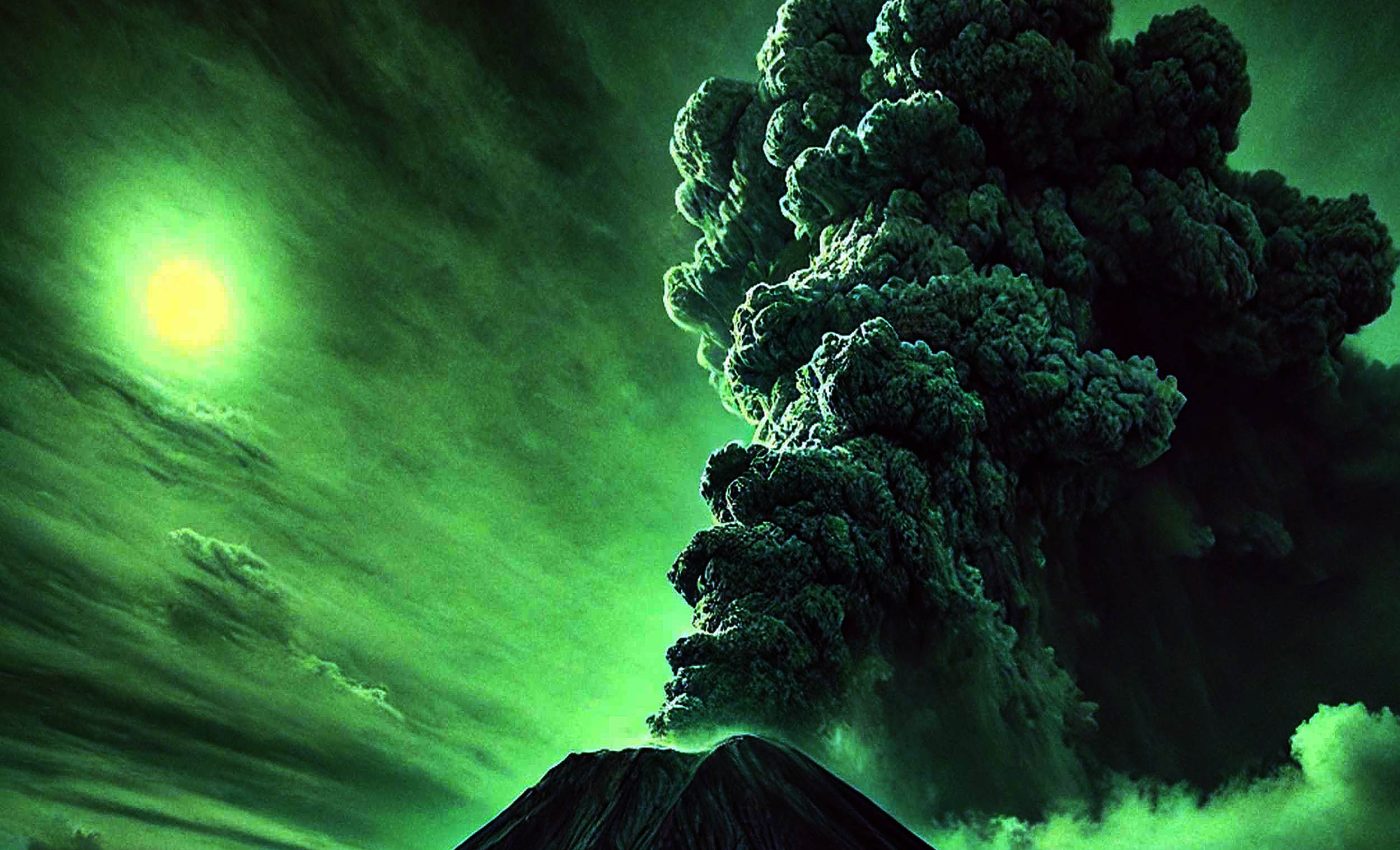
Volcanic eruption that cooled the Earth and turned the Sun green
Far away, on a remote island in the northwestern Pacific, stands a volcano that many people have never heard of. It quietly shaped global events nearly two centuries ago by sending clouds of ash high into the atmosphere.
This imposing feature is known as Zavaritzki, a caldera that rests within the Kuril Islands. Once overlooked by explorers and mapmakers, it recently drew attention when scientists linked it to a mysterious weather shift in the early 1800s.
William Hutchison, a volcanologist at the University of St. Andrews, matched sulfur-laden ice core samples with the distinct rock chemistry found on Zavaritzki’s slopes.
Unraveling the Zavaritzki puzzle
Ice cores preserve chemical and mineral traces that help researchers identify old volcanic explosions. For decades, one major blast from 1831 baffled experts because they could not figure out which volcano triggered such dramatic cooling.
Historical journals from that year described unusual hues in the sky, including a Sun that took on a greenish cast.
Many reports also noted a stark drop in temperature, which pointed to a significant injection of volcanic material into the air.
Scientists suspected that sulfur aerosols had reflected sunlight, but pinpointing the exact source to Zavaritzki proved challenging.
Potassium-poor ash as the key
Clues emerged when geologists examined tiny shards of minerals, from the cores, under powerful microscopes.
Tests showed these particles were low in potassium, which indicated a composition unlike many of the well-known volcanoes in Iceland or Alaska.
The discovery led researchers toward the Kurils, a remote chain of islands bridging northern Japan and Russia’s Kamchatka Peninsula.
Additional analysis revealed that these shards mirrored fresh samples from the slopes of the Zavaritzki caldera, which led to a breakthrough.
Cinder cones from the Zavaritzki caldera
Zavaritzki’s complex includes several cinder cones, which arise when gas-charged lava splatters and cools in steep mounds. These clusters often form around larger vents, adding layers of material each time an eruption occurs.
Cinders and ash accumulate at angles that can reach around 30 degrees, sometimes forming cones a few hundred feet tall.

These structures can collapse inward if lava flows breach the sides, creating a patchwork of vents and channels.
Monogenetic cones typically appear during a single eruptive phase, but multiple cones can punctuate the same region.
The presence of these features in Zavaritzki’s caldera indicates a history of intermittent volcanic episodes.
Tracing the eruption’s impact
Volcanoes that push sulfur aerosols into the stratosphere can affect temperatures far from their origin. In 1831, the fallout is believed to have caused widespread weather anomalies and a notable chill.
Diarists in Europe described summer storms and hail that damaged crops, while some regions reported an early onset of colder spells.
These conditions aligned with the timeline suggested by scientists from their ice core studies.
Radiocarbon analysis offered further confirmation that a major event happened around that date. By matching carbon signatures in volcanic deposits with those in dated materials, experts pieced together a more accurate chronology.
Invisible threats and modern lessons
Remote volcanoes can create havoc when they erupt, as they often remain off the usual monitoring grids.
William Hutchison pointed out that blasts in higher latitudes can still impact worldwide climate by spreading sulfate aerosols.
Historic examples, like the 1991 Pinatubo eruption in the Philippines, illustrate how a single volcano can lower global temperatures for months or years.
Even with modern satellite data, it is easy to overlook the activities of lesser-known peaks.
Scientists now prioritize collaborative efforts to expand surveillance networks. Improving early detection could reduce the toll of such eruptions on agriculture, infrastructure, and public health.
Peering beneath the waves
Some Kuril volcanoes lie partially submerged, forming flooded calderas where the ocean flows in. Others have steep-walled basins dotted with cinder cones and small lakes, as seen in Zavaritzki’s terrain.
During the Cold War, parts of this archipelago hosted submarines and hidden bases. Today, geologists map remnants of older eruptions to better grasp how these islands evolved over time.
Why the Zavaritzki eruption matters
Powerful volcanic eruptions can leave behind evidence in ice cores, tree rings, and written accounts. These clues reveal how the planet responds to sudden injections of ash and gases.
Distant events can disrupt harvests, freeze waterways, and shift weather patterns, reminding us that we share a connected atmosphere.
Understanding these processes helps us plan for future episodes that might catch us unprepared.
Zavaritzki highlights the importance of watching every corner of our planet, no matter how remote, in order to avoid the disasters associated with surprise volcanic eruptions.
The study is published in Proceedings of the National Academy of Sciences.
—–
Like what you read? Subscribe to our newsletter for engaging articles, exclusive content, and the latest updates.
Check us out on EarthSnap, a free app brought to you by Eric Ralls and Earth.com.
—–













